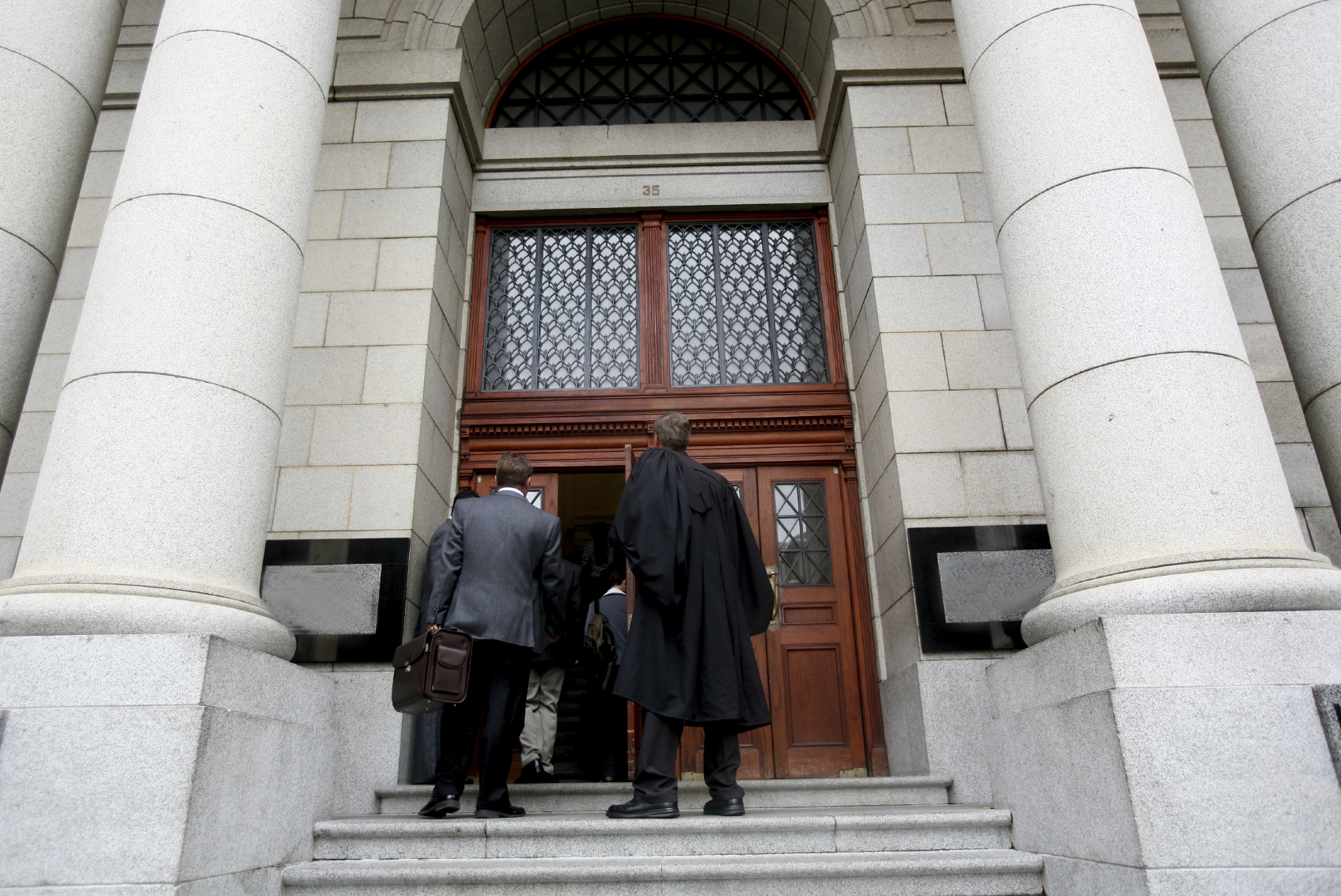COVID Interagency Collaboration Jail Populations August 1, 2016
Our county in Arizona has successfully and safely reduced the jail population in rapid response to the COVID-19 emergency, and to our knowledge, has so far avoided a single case of infection in our jail system, thanks largely to interagency trust built over several years—in significant part due to our participation in the MacArthur Foundation’s Safety and Justice Challenge initiative.
Pima County, Arizona, where I serve as a prosecutor, was one of the first 10 sites to be supported by the challenge in 2016, with the aim of reducing our jail population and tackling racial and ethnic disparities within the system.

Pima County’s geographic area is 9,000 square miles, the size of Connecticut, with a population of more than 1 million residents, and home to Tucson, the second-largest city in the state. Our multi-agency Safety and Justice Challenge team – with support from our Community Collaborative and participation by all the agencies in our Justice Coordinating Council – has been able to reduce our jail population by 15 percent from its peak in 2014, when we had close to 2,400 people in our 2,477-bed jail, and when we began planning and applying for the grant.
Before that, average daily population had been steadily increasing on a very steep trajectory, and we were looking at the need to build another jail.
By 2019, we had been holding relatively steady at around 1,960 people in jail for quite some time, until the arrival of COVID-19 spurred us to reduce our jail population by more than another 20 percent in less than a month. At the time of writing this, we have a population of 1,541.
Furthermore, we’re proud to say we didn’t simply release individuals from our jail onto the streets.
Everyone who has been released from jail during this COVID-19 pandemic without a home to go to was successfully placed into housing where they will be able to abide by social distancing recommendations issued by the Centers for Disease Control and Prevention (CDC). This housing will also reduce risk of relapsing with any behavioral health problems, which could increase their risk of re-arrest and coming back to jail.
How did we do it?
Trust among agency leaders
One of the main things that helped us is the trust among agency leaders from years of working together. For example, we have had good coordination between our office under the leadership of County Attorney Barbara LaWall and the Pima County Director of Public Defense Services, Dean Brault, who oversees the offices of our public defender, legal defender, and office of court appointed counsel. The Public Defender obtained permission from both public and private counsel and their clients to allow the Public Defender to represent all their clients who were inmates in our jail in connection with this initiative and to collaborate with us at the County Attorney’s Office. Simply put: All of us know each other, trust one another and have been working together closely.
The Safety and Justice Challenge grant from the MacArthur Foundation took an existing collaboration that had facilitated establishment of our Drug Treatment Alternative to Prison program instituted by our County Attorney in 2011 and moved us all forward together in a new direction. The grant also helped us to add new collaborator agencies, meet more frequently, have new goals, and focus specifically on our jail population. We also developed a community collaborative as part of the grant, so we have a broad network of community-based service providers and community leaders that we have been able to tap into at a moment’s notice, with agency heads who know one another.
The community collaborative brought in providers that we had not been working with previously, covering the gamut of re-entry services, faith-based agencies, as well as leadership from the county’s African American, Latinx, and Native American communities.
These bonds of trust and responsiveness made us nimble in responding to COVID-19, because we knew whom to contact to obtain services for inmates who would be released from the jail. When the County Attorney said she would support releases and wanted to make sure those released would have housing, transportation, and food, I knew our partner agencies could make it happen and that we could get it done together. I knew all I had to do was to pick up the phone or send an email.
It has been a heavy lift. But we have done it by all working together.
Reducing jail bookings
In mid-March, our Sheriff, Mark Napier, was one of the first people who said “we’ve really got to get ahead of this.” He directed his staff to figure out how to safely do jail intake, quarantine, and separation. Our jail is not a dorm style jail, it’s predominantly a pod-style jail—typically with just a few individuals per cell. Due to previous reductions in the jail population, some space was available. Now, there is even more space, so it is possible for the Sheriff’s correctional staff to have inmates practice social distancing and to set aside areas for quarantine and isolation as necessary.
On March 18, as the first COVID-19 cases were hitting Pima County, both the Sheriff and the County Attorney issued memos saying they would like our criminal justice partners to help reduce the jail population to pre-empt a crisis with the virus spreading there. The County Attorney urged all local law enforcement agencies to discontinue arrests for simple possession of drugs for personal use, crimes that are non-violent and non-dangerous. We suggested seizure of evidence in such cases, then either deflecting the individual directly to treatment, or simply waiting until the end of the health crisis to make an arrest.
We also indicated that we would not, for the time being, issue cases involving such arrests, would not seek indictments, and that the charges would be dismissed, so there would be no point in law enforcement making those arrests. In addition, our county attorney said she would not be issuing any indictments prior to arrest—for example, if agencies were trying to establish probable cause for a series of thefts, our county attorney said that if agencies did not yet have enough evidence now to demonstrate probable cause to make an arrest, our prosecutors would not be meeting with detectives to help them work towards gathering the evidence necessary for indictments.
These initiatives by County Attorney LaWall, along with pro-active direction given by Tucson Police Chief Chris Magnus who operates a successful Deflection program, as well as Sheriff Napier and our other local law enforcement agency leaders, have cut jail bookings in half from what they were a month ago, according to data we just received from our Pretrial Services Director and from the Sheriff’s Department, from 218 a week in February to 111 last week. We also have increased the number of people who are eligible for release without having to pay money bail, from 48% in February, to 54% as of last week. Again, that has a significant impact on the number of people remaining in jail.
Releasing people safely from jail
Then, our Sheriff made a series of recommendations about several categories of individuals who might be safely released from our jail, in partnership with our Courts, our County Attorney, and our Public Defense Services attorneys. We talked about the Sheriff’s Department Jail commander preparing a list of pre-trial detainees who had committed non-violent non-dangerous crimes, such as repeated shoplifting or simple drug possession for personal use, who had remained in jail simply due to inability to pay bail. Our Public Defender then led a review of that list on behalf of all the defense attorneys representing individuals on the list. And our County Attorney agreed to file joint motions along with the Public Defender, asking the Criminal Presiding Judge to remove bail as a condition for release, which the judge has granted.
Arizona has very strict laws on victims’ rights, and so the first of our joint motions related only to crimes without statutory victims. The second motion, filed a week later, included provisions to protect victims—for example, a person accused of shoplifting had to agree not to go near the store again—and that motion was granted a week later, resulting in the release of more people from custody.
It took five days from getting the list of detained people together to releasing the first round of individuals safely from the jail. It took another week for the second round.
Meanwhile, the Sheriff put together a separate list of inmates who were in custody awaiting hearings on petitions to revoke their probation for alleged violations, including some technical violations. The Presiding Criminal Judge referred that list to the assigned judges, each of whom determined whether it might be safe to release the probationer from jail at this time pending the hearings. Judges issued several orders asking the County Attorney whether there was any objection on behalf of the State, and in many cases, the County Attorney was able to respond that there was no objection.
Measuring success
Our Sheriff has been able to use the extra space freed up in the jail to institute safe quarantine and separation areas, and as a result, to my knowledge, we have so far avoided a single case of COVID-19 in our jail.
We are keen to share our experience with other jurisdictions; not to crow about our success at this very difficult time, but to offer up a best practice example, and to hold up a beacon for areas in which interagency trust and collaboration are emerging as one of the key factors necessary for success in stemming the spread of the virus within other jail systems.
—Amelia Cramer is the Chief Deputy Pima County Attorney in Tucson, Arizona.


